Showing 31–40 of 121 results

The book offers a systematic and complete account of the names and character of Hindu deities and their relationship with one another. Based on authoritative sources, it classifies the deities and explains their origin, function and worship supported by well-drawn illustrations.
Hindu mythology is a fascinating world of legends and stories centred around a sophisticated structure and hierarchy of deities and their worship. The many gods and goddesses, depicted in myriad forms in art and literature, constitute a sacred and complex subject of interesting study. The book, Hindu Mythology attempts to offer a systematic and complete account of the names and character of the deities of Hinduism and their relationship with one another. The book, typed afresh, studies the main attributes of the deities and recounts myths associated with their origin, nature, function and worship. For the purpose, the deities are classified into the major deities of the Vedic Age and those of the Puranic Age, and the inferior deities which include demigods, sacred plants, animals and birds, supernatural beings and minor deities like Sitala and Manasa. Based on authoritative sources, the reliable accounts are supported by well-drawn illustrations of the deities that add to the appeal of the work. The work involves clear explanation of terms and concepts in a fluent language. The volume will prove to be an interesting reference work for scholars and students of Hindu mythology and will attract general readers keen to acquire information on the subject.

This book traces the evolution of Hinduism from ancient period to the modern age. It records Dravidian and Aryan symbiosis in Hinduism, and the impact of Greeks and British, Buddhism and Islam. Quoting liberally from Hindu sacred texts and related literature, this book enumerates the ethical and socio-political implications of Advaita Vedanta, delving into the working of self-consciousness and the falsity of the world.
This book traces the evolution of Hinduism from ancient period to the modern age. It records Dravidian and Aryan symbiosis in Hinduism, and the impact of Greeks and British, Buddhism and Islam. Quoting liberally from Hindu sacred texts and related literature, this book enumerates the ethical and socio-political implications of Advaita Vedanta, delving into the working of self-consciousness and the falsity of the world. It emphasises the significance of the thoughts of Adi Shankara and others in this context. The book will be very useful for students and scholars of Hindu religion and philosophy as well as general readers.

The author focuses on some of the contemporary scientific ideas vis-a-vis the achievements of old-world Hinduism in cosmogony, astronomy, meteorology and psychology. The book, in the process, unfolds some fundamental Hindu philosophical concepts.
Hinduism is not just a religion. It synonymizes the five-millennia of Indias cultural heritage. Which is unequivocally manifest in the Hindus architecture, sculptural art, music, mythology, Sanskrit literary classics, social institutions, and ethical/legal codes. And also in their complex philosophical systems addressing perpetually baffling questions concerning creation, existence, cosmic consciousness, reincarnation, and the like. Yet, ironically perhaps, not many know about the striking breakthroughs of Hindu sages in astronomy, mathematics, chemistry, medicine, metallurgy, and other ancient-time sciences leave alone a deficient awareness of the monumental treatises of Charaka, Aryabhatta, Bhaskara and Kautilya that still remain as landmarks in the scientific history. Here is a book trying to highlight how Hinduism of yore : both in its motivations and methodology, laid the foundations of modern scientific quest. Drawing on the prodigious mass of Vedic/post-Vedic Sanskrit writings, the author focuses specially on some of the contemporary scientific ideas vis-a-vis the achievements of the old-world Hinduism in cosmogony, astronomy, meteorology and psychology. Contextually, Iyengars book also unfolds the Hindu worldviews of creation, soul and determinism, among other fundamental philosophical concepts. Discerning readers will find Hinduism and Scientific Quest as much a useful read as the scholars of traditional Indian philosophy and history of science.
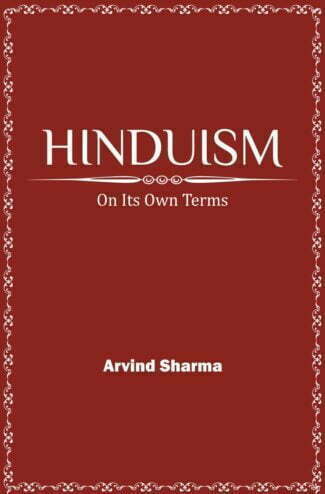
This book defines and surveys Hinduism, and elaborates its keywords. It consists of two parts. The first part is a general survey of Hinduism. Many terms which appear in the first part are elaborated in the second part. This volume enables readers to grasp the fundamentals of Hinduism.
Hinduism, due to its proteanness, is more a way of life rather than a creed. The Hindu tradition recognizes the Vedas as its foundational scripture, Hinduism itself being indigenously known as Vaidika Dharma. Shruti and Smriti are the primary sources of Hinduism, where the former connotes the Vedas that stand for the revealed wisdom and the latter stands for tradition. Smriti texts include law books like the Manusmriti, epics (Itihasa) like the Ramayana and Mahabharata, Puranas, Agamas, Darshana literature (philosophical systems), sometimes Buddhist and Jaina works, other than the numerous religious works in regional languages.
Hinduism was challenged by the rise of heterodox movements in the sixth century bce, especially Jainism and Buddhism. Their prolonged encounter and interaction led to the development of the philosophical schools of Hinduism. The advent of Islam and Christianity, and the origin of Sikhism, led to further developments in the Hindu thought system.
This book defines and surveys Hinduism, and elaborates its keywords. It consists of two parts. The first part is a general survey of Hinduism. It describes its primary sources of information and the historical trends within its study; the Great Tradition with its basic teaching and practices; the Little Tradition; and modern developments. Many terms which appear in the first part are elaborated in the second part, along with some additional terms.
This volume enables readers to grasp the fundamentals of Hinduism.
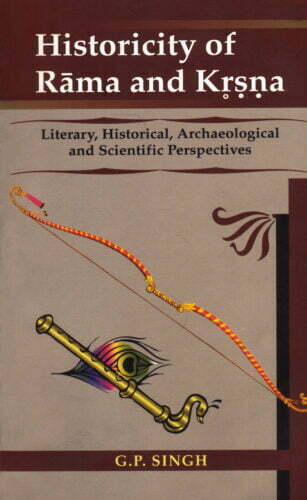
This monograph is a research-based disquisition on the historicity of Rama and Krishna. Their historicity has been proved on the combined testimony of literature, history, archaeology and science. The work is largely based on original sources, deals with all relevant aspects of the subject and provides new insights into the history of India of the epic age.
This monograph is a research-based disquisition on the historicity of Rama and Krishna. Their historicity has been proved on the combined testimony of literature, history, archaeology and science. The work is largely based on original sources. It deals with all relevant aspects of the subject. It provides new insights into the history of India of the epic age. The author has brought to light many new facts relating to the subject. They will enlighten the inquisitive readers.The work is of immense value not only for the historians and archaeologists but also for those who are genuinely interested to know truth about the subject.
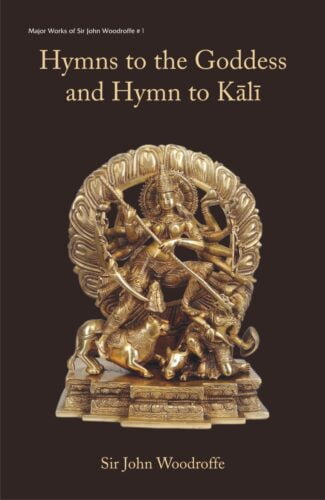
This volume Hymns to the Goddess is an endeavour of Sir John Woodroffe (Arthur Avalon) to translate the Sanskrit hymns in praise of the Goddess or Devi, scattered in Tantra and Purana texts, Mahabharata, and in the hymns of Shankaracharya. Hymn to Kali (Karpuradi Stotra), another book within the book, is a celebrated Kaula stotra, having commentary on the hymns.
The Goddess or Devi is God in Its Mother aspect. Devi, who is existence, consciousness and bliss, is thought of as a female, a male or pure Brahman. This volume Hymns to the Goddess is an endeavour of Sir John Woodroffe (Arthur Avalon) to translate the Sanskrit hymns in praise of the Goddess or Devi, scattered in Tantra and Purana texts, Mahabharata, and in the hymns of Shankaracharya, who was an incarnation of devotion and a great philosopher, Valmiki and Indra.
After a general introduction, the book starts with a hymn to Kalabhairava, the spouse of Devi, followed by Devi stotras. In these hymns, Devi is praised as Bhairavi, Bhuvaneshvari, Adyakali, Lakshmi, Tara, Mahishamardini, Annapurna, Sarasvati, Durga, Tripura in Tantra texts; Sarvavishvajanani, Ambika, Chandika, Mahadevi and Jagadambika in Puranas; Durga, Arya, Durga in Mahabharata; Tripurasundari, Ganga, Ananadalahari, Yamuna, Narmada and Mahalakshmi.
Hymn to Kali (Karpuradi Stotra), another book within the book, is a celebrated Kaula stotra, having commentary on the hymns. It, in addition to mantroddharadhara, contains stotras of dhyana, yantra, sadhana, madya, mamsa, maithuna and phala-shruti matters.
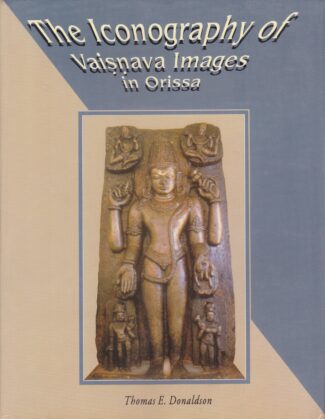
This work analyses the Vaisnava iconography of Orissa. Vaisnava iconography proper including Hari-Hara and other composite images and those of Visnus female consorts; images of Visnu in his avataras; depiction of Balarama, Krsna and Jagannatha; and iconography of the secondary figures like Garuda and Hanumana.
This work is a well?researched attempt to analyse the Vaishnava iconography of Orissa which is unique in that there are to be found an overwhelming number of Vishnu images in the region despite paucity of Vishnu temples and inscriptional evidence suggesting royal patronage. Dr. Donaldson here undertakes a detailed study under four heads: Vaishnava iconography proper including Hari?Hara and other composite images and those of Vishnus female consorts; images of Vishnu in his different avataras; depiction of Balarama, Krishna and Jagannatha; and iconography of what are termed secondary figures like Garuda and Hanumana. He presents various iconographic charts throughout the book on the basis of textual description of the many images and their representations in sculpture with a number of photographs of the images studied, he provides details on the physical attributes of each group of images and specific images and their evolving iconographic and stylistic peculiarities: such as the decline of a particular motif and the emergence of another depending on the popularity of sects. The author also traces with keen interest the influence of Vaishnavism on the iconographic programme and rituals of Shaiva temples, resulting in even joint worship of Vishnu and Shiva. For each type of iconography, the book cites examples of different Orissan temples and discusses the images in them. The book would be of immense interest to scholars of religious studies and particularly those concerned with Hindu iconography.
Can Indian civilization be compared to a “thousand-branched tree”? What have been its outstanding achievements and its impact on the world?
These are some of the questions this book asks. But it also deals with issues confronting more and more Indians caught in an identity crisis: What does it mean to be Indian? What is specific to the worldview developed by Indian culture? How has it dialogued with other cultures? Is it built on durable foundations, or is it little more than colourful religiosity and quaint but outdated customs? And what are the meaning and application of secularism and tolerance in the Indian context?
The French-born author, who has been living in India for 33 years, argues that Indian culture is not some exotic relic of the past, but a dynamic force that still has a role to play in defining India’s identity and cohesion, and in proposing solutions to today’s global challenges.
Written in a crisp and engaging style, this thought-provoking volume challenges received ideas on India’s culture and invites us to think afresh.
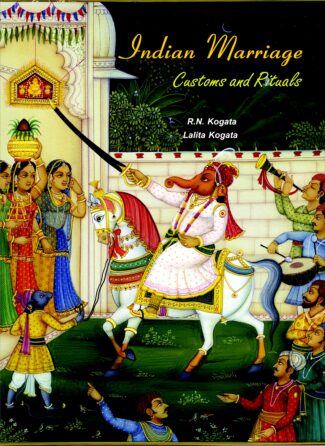
Marriage or Vivaah, particularly in India, is a sacred ceremony comprising various customs Þ religious and social Þ and Vedic rituals. These are meant to propitiate the gods for obtaining their blessings for the bride and the bridegroom, and to honour and entertain those who participate in the celebrations. This book explains in detail, all the important rituals which form part of the marriage.
Marriage is considered a very significant ritual for giving societys sanction to a close relationship between a man and a woman as husband and wife. It is, therefore, also called a social system. The marriage ceremony is a combination of many rituals, based on information contained in Hindu scriptures. It also represents and reflects the social customs and practices that are prevalent in the society. The rituals vary depending upon the community, the religion and the state where they are performed. The marriage customs, rites and rituals among royal families are mentioned in this book most of these rituals are followed by common people as well and are performed in the original or altered forms in the Indian society. Mr R.N. Kogata and Mrs Lalita Kogata did a lot of research and consulted several authorities and have written in detail about the various rituals involved in a human beings life from birth to death. Different scholars have mentioned different numbers of rituals and sacraments 25, 40 or 48. But Maharishi Veda Vyasa has described 16 rituals as important. Out of these, the Vivaah (marriage) samskaar itself encompasses various rituals the main ones covered in this book are: the Bindaulee (wedding procession); Hathalevaa (hand-taking ceremony or paanigrahan), Phere (agni pradakshinaa, circumambulation of fire); Kanyaadaan (giving away daughter in marriage); Maangbharaaye (filling vermilion); Mangalsutra (tying the wedding thread); Saptapadee (walking seven steps together); and Vadhu kee Vidaaee (brides departure to her in-laws house). This book should be in all households in order that all will know the meanings of the various rituals in a marriage particularly in the present days when learned pandits who can explain the rituals, are few, and people have no time or inclination to go through voluminous scriptures or texts on the subject of marriage.
Does Indian civilization have the capacity to change or has it been static? The impression of this civilization as an unchanging one has been revised today. Conflict-tension processes in a complex heterogeneous civilization like that of India are equally important and require in-depth studies along with investigating the continuity of tradition. It is in this context that protest, dissent and reform movements have also played a critical role and facilitated adjustments to changing social realities over the centuries. From time to time alternate systems to the accepted ideological or normative patterns have been suggested. Apparently many of these movements were religious in nature, but the socio-economic context which remains in the background does require further detailed examination. The present volume reflects some aspects of these movements. It is one in the series undertaken as part of the group project A Sourcebook of Indian and Asian Civilizations at the Indian Institute of Advanced Study. The essays in this volume by such scholars as Arun Bali, Savitri Chandra, Narendra Mohan, M.G.S. Narayanan and Veluthat Kesavan; Y.M. Pathan, M.S.A. Rao, Sachchidananda, G.B. Sardar and Pushpa Suri will stimulate discussion and generate new perspectives towards understanding Indian civilization.
| There are no products |